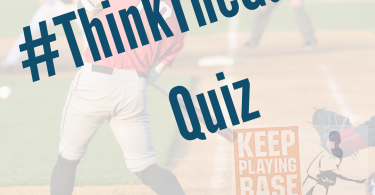In the last post, we told you about SMART goals. Goal-setting is an important skill for athletes and we want you to set your goals in a way that will improve your chances of success. This time, we’re going to answer some common questions about goal-setting, then it’s all up to you.
1. Should I write down my goals or just keep them in my head?
Most coaches will tell you that you should write down your goals and put them up somewhere you will see them every day. You have a lot of other things to do with school and friends and other responsibilities. On the days that you are tired or sore, you may think that it’s not worth working hard at practice or during a scrimmage. When you write down your goals, your mind focuses on what you want to achieve. If you can see those goals every day, you’ll be reminded about where you are trying to go and what you are trying to be. Goals can keep you going in the right direction.
2. How will I know if I’m making progress toward reaching my goals?
Since your SMART goals will be specific and measurable, it should be easy to tell when you reach them but what if it takes you days, weeks, or months to reach them? You’ll want to know when you are doing the right things and getting closer to where you want to be. It can help to have process goals to help you see how far you have come and how far you have to go. You might need to have your coach help you set your process goals because you may not know all the steps you need to take to improve your skills. For example, maybe the reason why you struggle with a low percentage of first pitch strikes is because of a problem with the strength in your lower half or maybe it’s an inconsistent release point. Your coach can help you work on exactly what you need to do to get better – things like being able to block or absorb impact at foot strike or find a more natural arm slot. Your process goals can be related to how often you can perform the actions your coach suggests. For example, you might have a process goal of being able to get to the foot strike position of your delivery without buckling your knee. Once you can do that, you can work on other ways to master the strike zone while maintaining velocity.
3. What kinds of goals are best to use?
If you really want to improve your skills, you want to use a mix of goals – process goals (specific things you need to work on) and performance goals (getting those first pitch strikes). While outcome goals (10 wins in the season) are common, baseball is a team sport and lots of things can happen during a game (that’s why we love it). So you might get those first pitch strikes and strike out 11 in a career start but lose to a guy who throws a no hitter. Outcomes are important but you need to focus on the parts of the game that you can control.
4. Should I set goals that are hard or easy to reach?
Coaches and even sports scientists think it is better that you make goals that are somewhat difficult to reach – rather than easy. You might want to try to improve your skills by 20 or 25%. So if you are throwing first pitch strikes 5 out of 10 times, you want to set a goal to consistently do it 6 or 7 times out of 10. Or you could set a goal to get your 60-yard speed from 7.9 seconds to less than 7 seconds. Not easy! You need to challenge yourself but you don’t want to set the bar too high. Impossible goals are useless to everyone. You need to be realistic about your current skill level and what targets you are trying to reach. You’ll know you have a great goal when 1) you know exactly what you are trying to accomplish, 2) you have a way to measure if you are making progress, and 3) you need to work moderately hard to make it happen.
Good luck!







